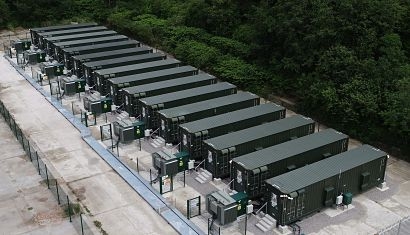
Constructed on a brownfield site in Lascar near Manchester, the installation comprises 16 1.25MW/1.25MWh lithium ion containers. The project has been funded, designed and installed by Anesco and is being monitored by the company’s operation and maintenance service, which will ensure the batteries continue to perform at their optimum efficiency.
The development is benefiting from multiple revenue streams, including the wholesale market, capacity market and National Grid’s balancing services, which seek to secure the security and quality of the UK’s power supply.
“We’re delighted to have successfully seen yet another large scale storage project through from planning, to deployment and long term management” said Steve Shine, Anesco executive chairman. “Our full service capabilities and unique understanding for how to derive commercial value from renewable assets is something that continues to find favour with investors and customers. Our ability to not only model revenue but to show genuine results being achieved by existing assets, remains a key differentiator within the market and is something our customers highly value.”
According to Shine, Anesco has fuelled the take up of battery storage in the UK, after creating one of the most accurate revenue modelling tools on the market.
Mr Shine added that Anesco has access to a comprehensive data set and that this has allowed the company to create a tool capable of predicting whole life cost, IRR and long term revenue streams. All this information is vital for investors and lenders, who are seeking greater certainty and to minimise risk. With their substantial portfolio of existing assets, Anesco can now see the real numbers versus our modelled numbers to demonstrate the commercial returns of battery assets.
Established in Reading in 2010, Anesco has developed 102 solar farms to date, while its renewables operation and maintenance arm has nearly 1GW of renewable energy under management. Anesco was the first developer to achieve subsidy free solar and remains the only one to retrofit batteries to existing solar sites, while retaining their associated incentives.
For additional information:

